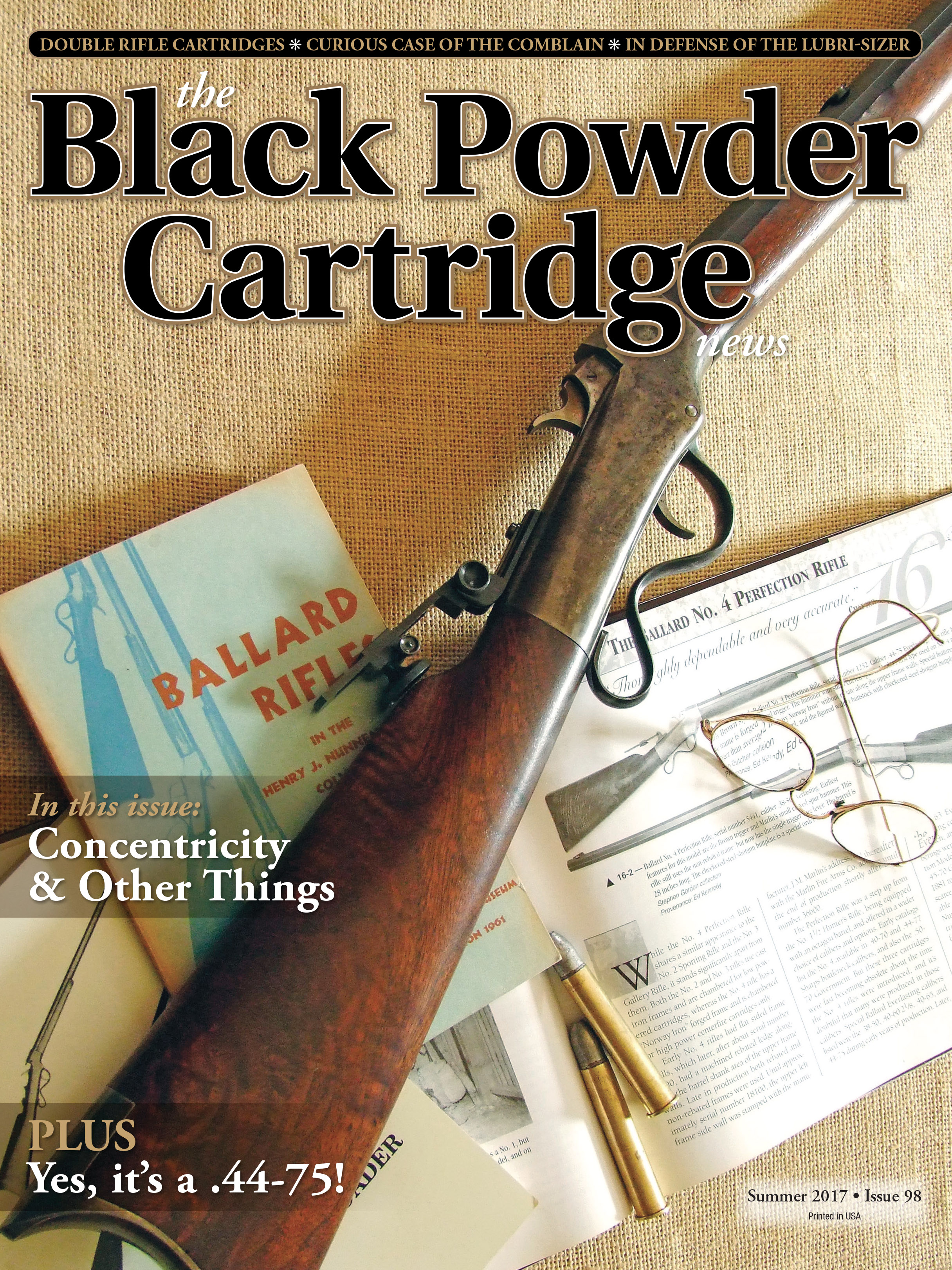The Wyoming Schuetzen Union's Center Shot
Getting Started in Schuetzen
column By: Cody Smith | June, 17
So maybe you find yourself thinking: This schuetzen stuff looks pretty interesting. Maybe I would like to try it. Or perhaps it’s more along the lines of: Those Pope and Hudson fellows’ scores aren’t that good. I bet I could beat them! Great! Now what? How does one get started in this sport? Hopefully, the following advice will guide those interested in getting started in
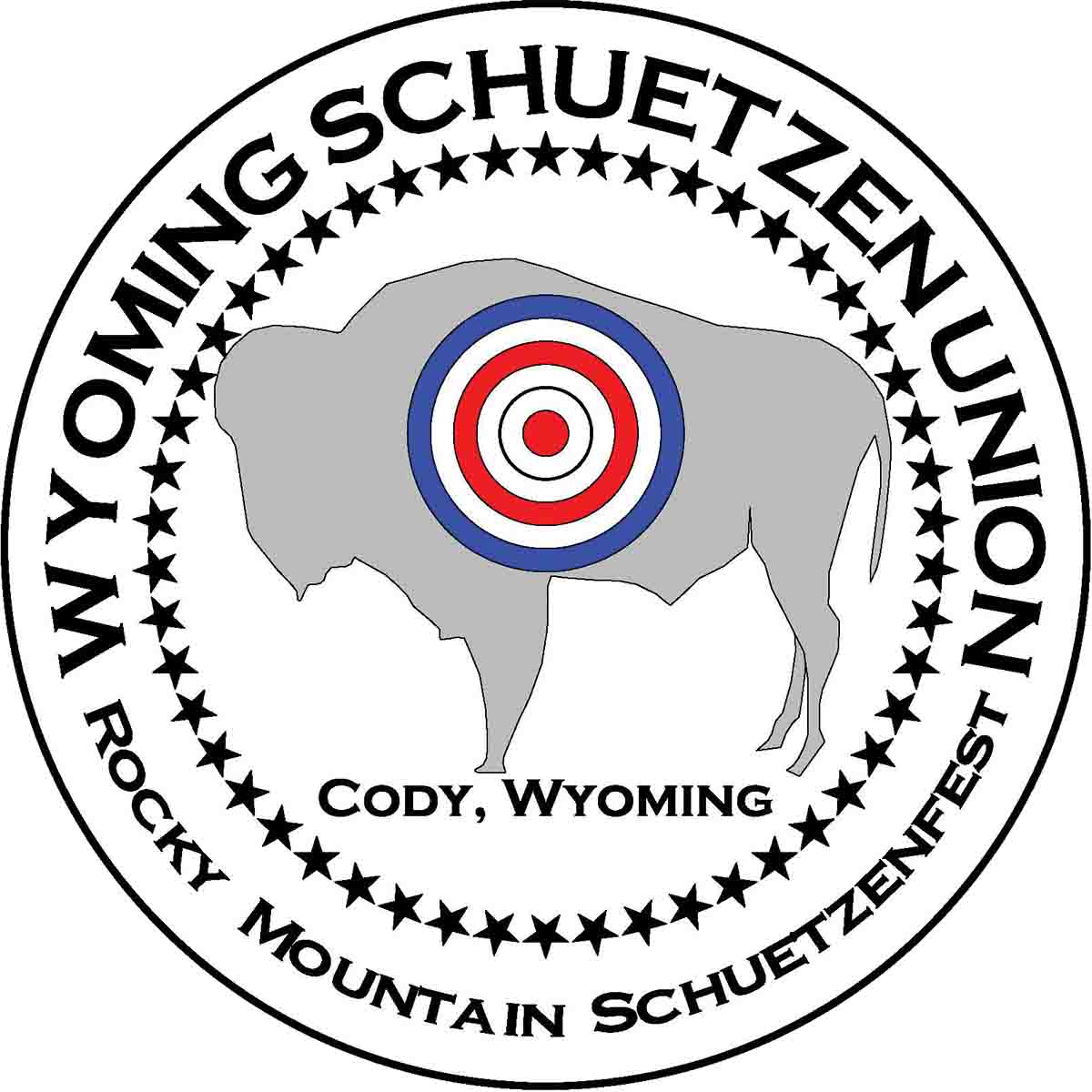
Schuetzen to a long career in this rewarding and challenging sport. As a relative newcomer to this sport, I can relate to those who are interested and want to get started.
First of all, research! Research is actually one of the fun parts of this sport. There is so much to learn, purchase and experiment with, it is an ongoing, almost never-ending journey. I think the single best reference is a book written by Randolph S. Wright titled Loading and Shooting Traditional Schuetzen Rifles, A Beginner’s Guide. Randy does an excellent and thorough job going through all parts of shooting historic target rifle matches. Start here and spend some time reading it and anything else you can find on the subject. You have to look a little bit, but there is actually quite a bit of information out there. Your favorite Internet search engine will often turn up some interesting reading. Some favorite Internet haunts of mine include the Wyoming Schuetzen Union Forums page (www.wyomingschuetzenunion.com) and the American Single Shot Rifle Association website and forums (www.assra.com).
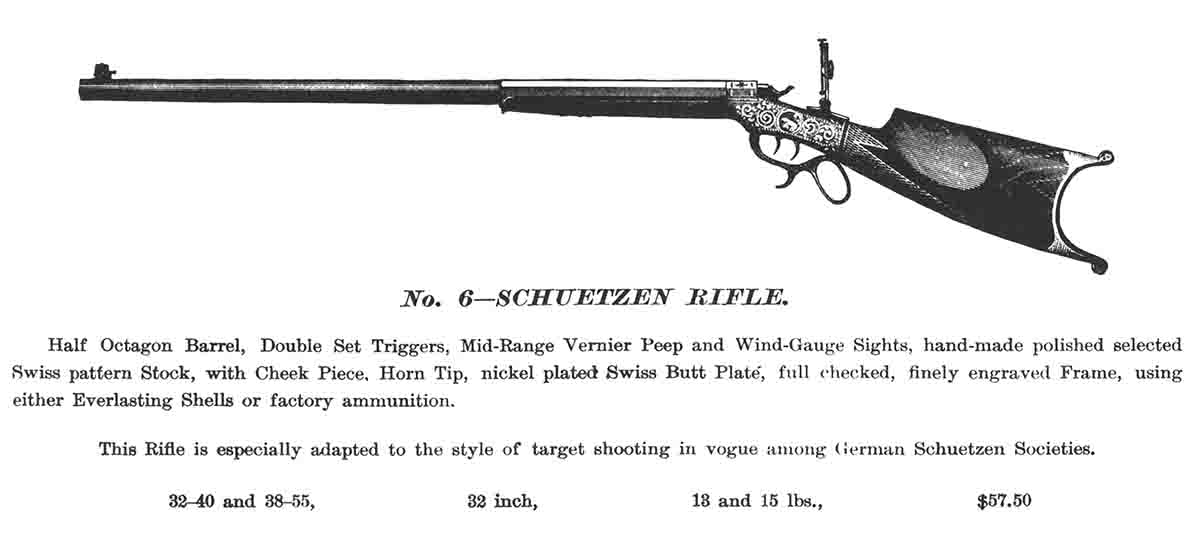
Probably the biggest obstacle in getting started in Schuetzen is acquiring a rifle. One of the great things about Schuetzen is that each rifle is truly unique, and some of them even seem to develop their own personality. If taken care of, the rifles do not wear out and will last almost forever. Recently, fellow shooter and top competitor Jack Odor brought his original Pope Ballard rifle to one of our monthly matches. After he gave us a sound thrashing with the rifle in competition, he let each of us shoot it. It was a very enjoyable experience shooting and handling the rifle, all the while thinking about where the rifle might have been over the past century.
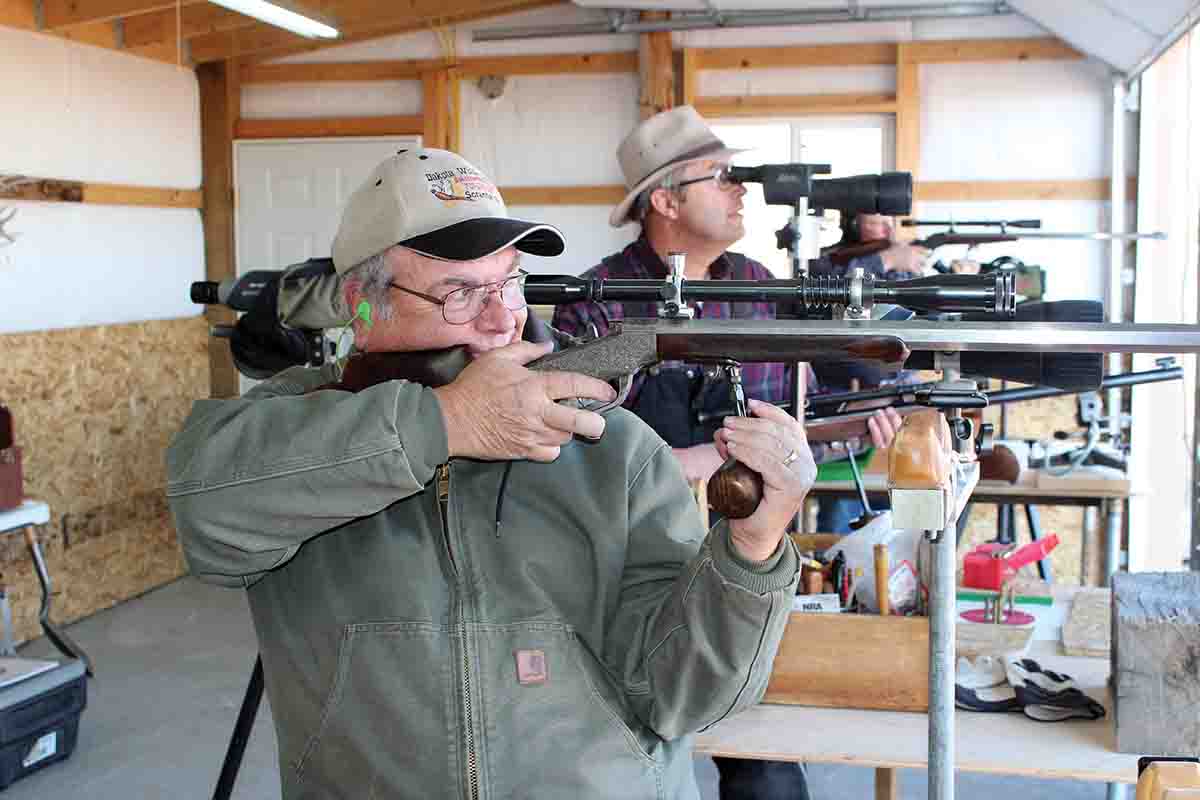
I think it is important to appreciate and understand your rifle, valuing it more as a partner rather than a hunk of steel and wood. Perhaps it is similar to the relationship a cowboy has with his horse, or maybe a driver has with his race car. You have to learn how to take care of and feed it to make it perform. Like horses and cars, there are rifles that clearly perform better than others. Because of this, really great rifles are rather hard to come by.
So how do you find a great rifle? There are several routes one can take. It is important to remember that the only real requirements for the rifle are that it is a single-shot action and uses solid lead bullets. You might already have such a rifle in the safe, and that might be a good place to start.
There are many custom gunmakers who will hand-build one just
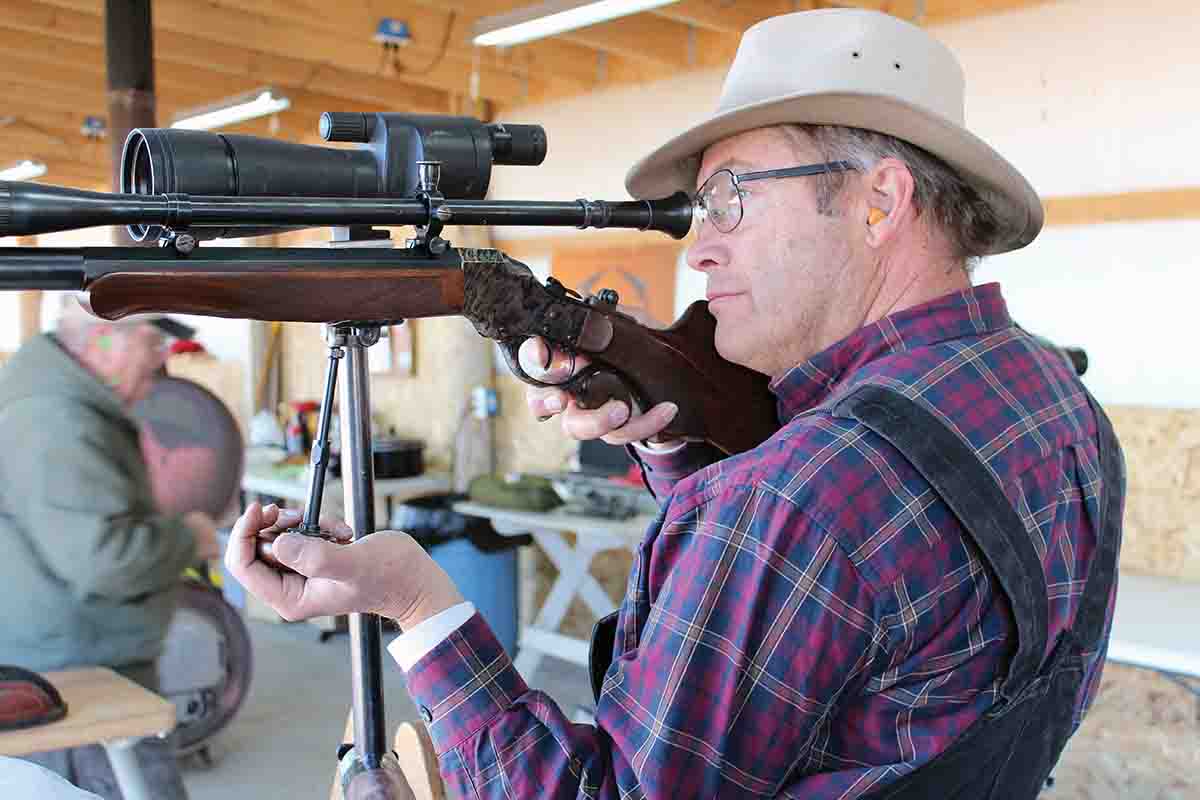
for you. The problem with this is that you have to know what you want, and it can take some time to figure this out, as well as becoming quite expensive. CPA Rifles (www.cparifles.com) offers a high-quality reproduction of the Stevens 441⁄2 rifle and produces a very nice Schuetzen rifle. The company’s turnaround time is usually several months, and a lot of competitors use and win with CPA rifles.
Wyoming Armory (wyomingarmory.com) deals in quality used rifles, as well as restoring them and producing new ones. There is usually a selection available, or they will help look for something you want. Check out its website or give them a call, and I am sure you will find them very helpful. Online Internet auctions such as Gunbroker.com often have Schuetzen rifles for sale. Although, a beginner is better off purchasing from someone who can offer product support and a history of the rifle; these sites can be a good place to look and get some ideas.
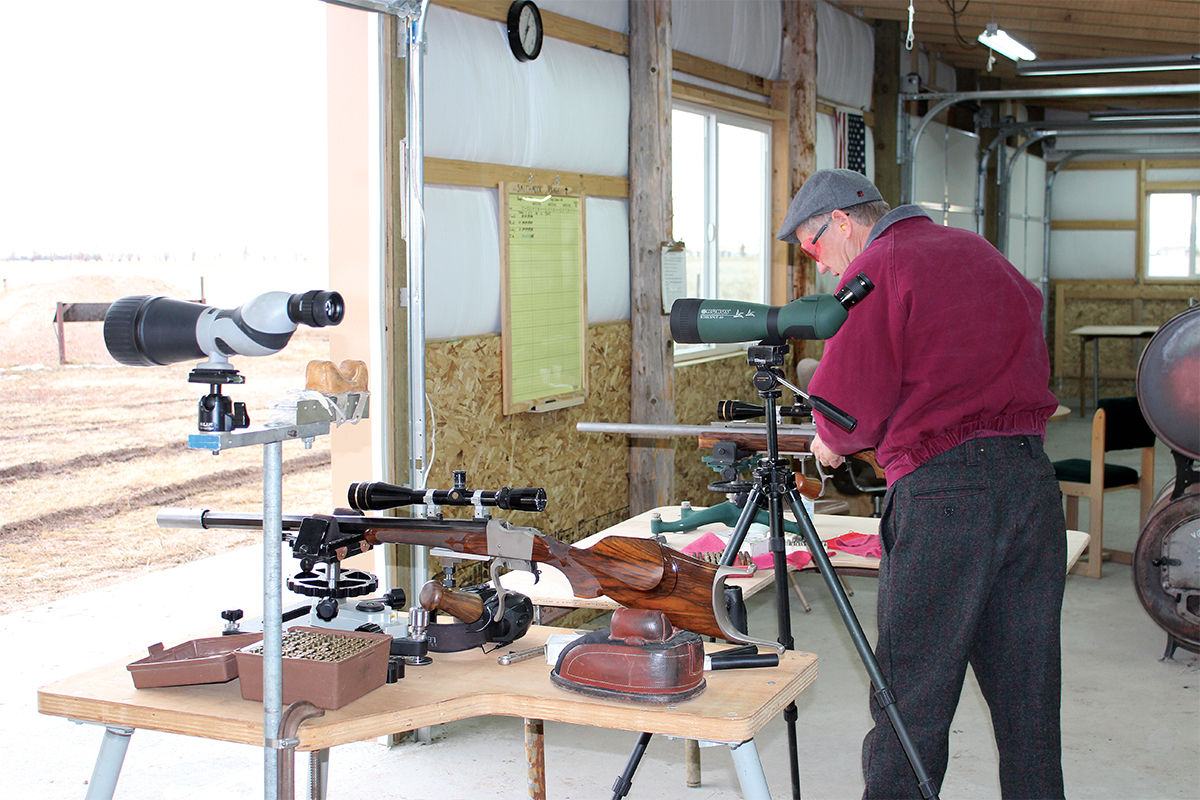
I think the very best place to purchase a Schuetzen rifle is from a fellow competitor. If you don’t know anyone who competes, find out where a match is going on and go visit. It is hard to understand or describe the atmosphere at a Schuetzen match. It is the best mix of competition and socializing I can think of. Every effort is taken to make the best shot possible with less regard to time than other events. There is usually a lot of time to visit and enjoy each other’s company. Folks that are interested in starting to shoot are usually made quite welcome, and you will get lots of encouragement and maybe even a little more advice than you might want. Shooters often bring rifles to sell, as well as rifles for sale from shooters who have passed or have gotten too old to compete. These rifles often come with some accessories like bullet moulds, palm rests, cartridge cases and sights. More often than not, there is usually some good advice included about what bullet or load the rifle likes. The International Single Shot Association International Match that is held each year in August in Raton, New Mexico, may offer about the best Schuetzen swap meet there is. There is a gun show that occurs on the range during the matches where I hear a new shooter can find just about everything he might need, including lots of advice and ideas.
What else does one need to compete in Schuetzen? Randy’s book does a much more thorough job of describing what you need than I can do here, but here are some major points.
You will have to decide upon and acquire sighting equipment. There are multiple manufacturers represented here in the NEWS that make and sell super products. Used and original scopes along with iron sights are available as well. The hunt for a good period scope can be much like the search for a rifle. Fellow shooters and the Internet are where I would start.
Brass and dies can be found from the normal sources, and if it is an unusual case, custom brass can be purchased from Rocky Mountain Cartridge (www.rockymountaincartridge.com). Although you can shoot fixed ammunition, and some match’s time limits dictate that you must do such a thing, most competitors breech-seat. In breech-seating, the bullet is inserted into the barrel first and the charged case is loaded next. This ensures the bullet is started perfectly straight into the rifling. Using a rifle with a camming action, such as a Stevens, a plugged case can be used to start the bullet. On other actions, a tool must be used. Although I do not know of a major manufacturer of breech-seating tools, there are a couple of competitors who make them. Russ Weber is one such competitor who makes a great breech-seater. Do not let the thought of breech-seating deter you from participating. I can breech seat much faster and with less effort than I can blow tube or wipe my BPCR silhouette rifle.
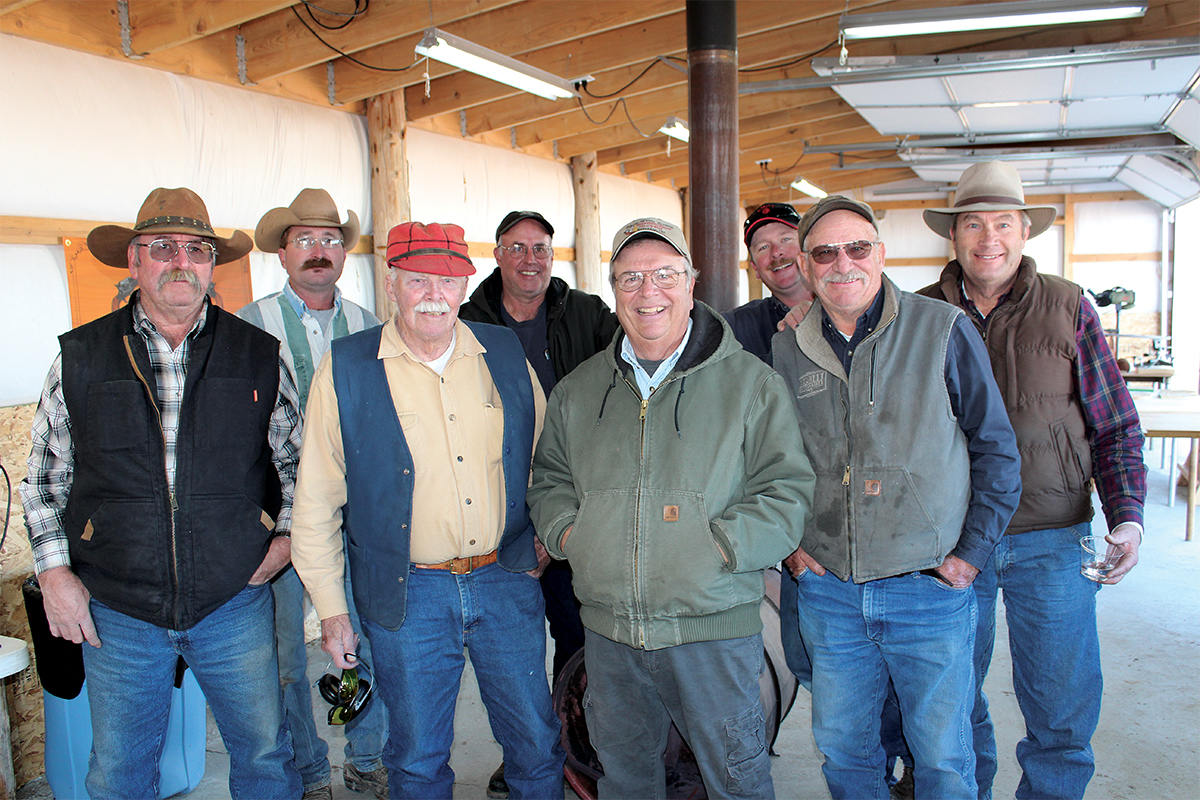
You will also want to put a “kit” together to take to the match. Everyone has their own ideas of what is needed, and you will soon find out what you need after going to a few competitions. Most shooters have some sort of range box they take that contains all their small accessories, a quality spotting scope, shooting rest or sandbags and perhaps their favorite stool or other item that helps them be comfortable. Having some organization to all your stuff is definitely a must. Under the stress of a match, you want to easily find what you need; it can also be a challenge actually getting to the match with everything you need. I am not sure how many times I have forgotten some key item. I was usually able to borrow it, but I would much rather have used my own familiar equipment. After a couple of years of shooting, I think I have finally gotten my kit organized so that it is easy to load in the truck, contains what I need and is easy to find during the match.
The one thing that you will need and never be able to get enough of for Schuetzen-style shooting is range time. I find my practice time with my Schuetzen rifle to be very enjoyable and rewarding. Using the German Ring targets, it is very easy to track your progress and set goals for improvement. At any one time, there is quite a pile of targets littered around my office for either bragging rights or to further analyze to see where I went wrong. Crazy as it sounds, most Schuetzen rifles are actually quite affordable to shoot. Using 13 grains of Accurate No. 9 powder with a 3-cent primer and a homemade bullet, I end up with less than a dime per round. Considering that target-grade .22 cartridges start at that price and go up from there, my .32-40 Schuetzen rifle is much cheaper to shoot and practice with than my .22 rimfire. I can also easily practice by myself without the help of a spotter, and I suspect some of my most productive practice sessions occur when I am alone and able to completely focus on the task at hand.
Whenever I have some slack time to go to the range with no particular plan in mind, I find myself reaching for my Schuetzen rifle most often. Give Schuetzen matches a try and I would be willing to bet you will find yourself in the same predicament.
.jpg)
.jpg)
.jpg)
.jpg)


